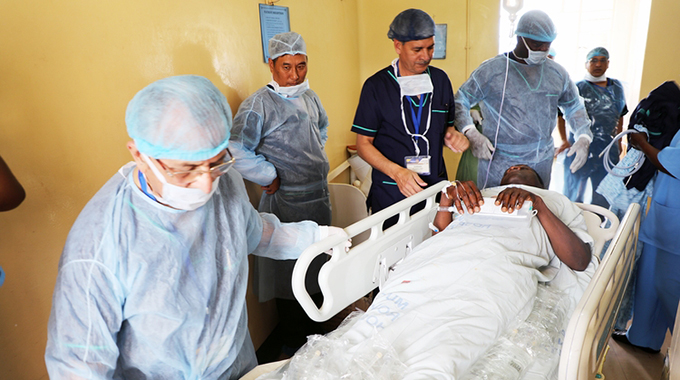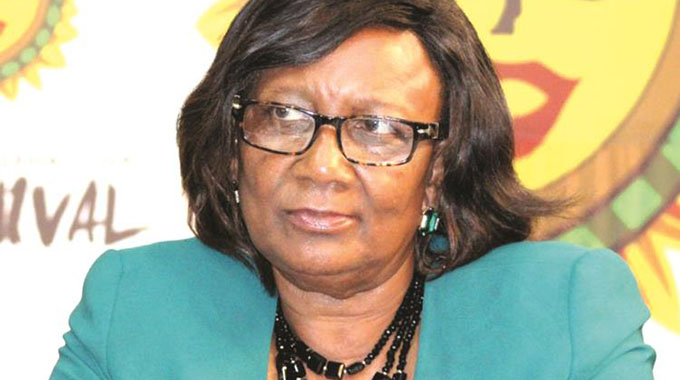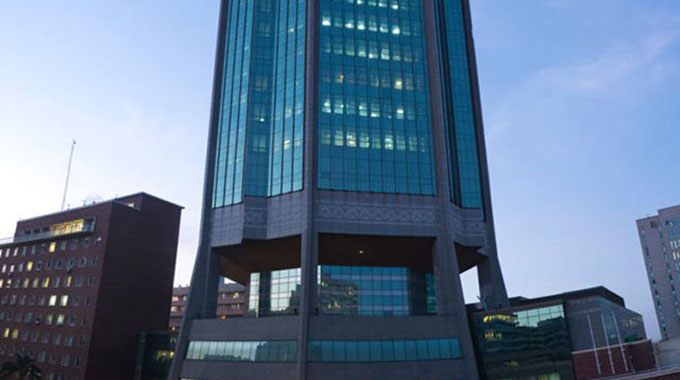Indian doctors assist 700 in Mutare

Rumbidzayi Zinyuke Manicaland Bureau
TWENTY specialist Indian doctors who are here under the Zim-India Vocational Training Team mission has so far assisted over 700 patients suffering from various ailments at Mutare Provincial Hospital.
The doctors, who are on the Rotary International project that was put together by the Rotary Club of Chitungwiza, Rotary Club of Chandigarh (India) and Rotary Club of Mutare, are offering free surgical services to patients.
The team, which started work last week, brought equipment, instruments and medical supplies which will be donated to the hospital at the conclusion of the mission.
Besides the supplies, the specialists are training local doctors whom they are working with to enable them to continue providing similar services.
The last mission to come to Mutare was in 2015 and it handled more than 1 100 surgical cases against a target of 800.
According to the doctors, this year’s mission will exceed 1 500 cases given the large number of patients who have come forward.
Project director Mr Madhukar Malhorta said they expected the number of patients coming in to increase as the week progressed.
“Over 700 surgeries have already been done and in the next four days we expect the numbers to vary,” he said.
“In gynaecology, we are doing six to eight surgeries a day, in orthopaedics we are doing about six to eight surgeries also, in plastic surgery we have three to five depending on the complexity of the surgery, in the eye unit we are doing between 20 and 30 surgeries a day and dermatology is seeing about 100 patients a day, dentistry is seeing anywhere between 80 to 100 patients a day.
“Some of the patients have been suffering for up to 10 years and there has been no help for them because no one was equipped to deal with these cases. This is now happening.”
For many Zimbabweans, the treatment for a sore tooth has always been extraction, but Dr Gulshan Thakral said there was need to find ways to save teeth.
He said they were attending to between 100 and 125 patients daily and they were doing root canal treatment, fillings as well as extractions on teeth.
The department received X-ray films, a portable dental unit and a compressor.
“In dentistry, we have come with the latest equipment, materials, supplies and medicines, fillings, teeth sealing measures to save the patients’ teeth wherever it’s possible,” said Dr Thakral.
“Most people came here for extraction because they might not afford to save the tooth, but now that they know we can do that, they have been coming in numbers, hence the long queues. We have had tremendous support from the local team and our volunteers, even those from the private sector have come in to see how we work. They want to learn.
“We will leave all these equipment and instruments with the hope and conviction that the local dentists will carry on the same work and save people.”
Dr Thakral said if the equipment and instruments were properly cared for and maintained, they will last for more than a decade.
With the latest technology in dentistry, Mutare General Hospital could become a leader in offering the best dental care to patients in the province and beyond.
“From the latest technology we have with us, we are expecting to impart the knowledge and skills to the local doctors,” said Dr Thakral. “We are not only leaving these materials, but we are also leaving the skills behind us.
“The idea is that they should be able to carry on doing this after we are gone, then our mission will have made an impact.”
The eye unit is being manned by four Indian and two local doctors and has been receiving an average of 30 patients a day.
Dr Wani Mena, a local ophthalmologist, said the unit might operate on about 500 patients by the end of the week, which is more than the 300 to 400 patients being seen at the hospital every year.
“This mission has provided a great service to the people of Manicaland and others from other provinces,” he said. “It has allowed us to extend quality health care to populations that are not able to afford it.
“We were supposed to have four surgeons operating at the same time, but we don’t have enough microscopes and operating space, so we are deploying three surgeons at a time and we rotate,” he said.
Dr Thakral said most cases being operated on were cataracts, which is the most common causee of blindness in Zimbabwe.
Other cases attended to included those with tumors growing in the eye and glaucoma.
Patients who spoke to The Herald expressed their gratitude to the doctors.
Mrs Sarah Chikore from Murambinda had surgery to remove her cervix at St Joseph’s Mission Hospital after it had troubled her for more than three years.
“I could not get help for three years because I didn’t have money,” she said.
“When I heard of this mission, my doctor referred me and they did the operation to remove the cervix.
“I will forever remain grateful to the doctors because they came at a time when things are difficult and healthcare is inaccessible many.”
Ms Natalia Chikwakwama from Harare said the doctors did a Loop Electrosurgical Excision Procedure (LEEP) on her, which could have cost her US$1 500 had it been done by private doctors.
The procedure prevents cervical cancer.
“I was told I needed this procedure as soon as possible, but I could not afford it,” she said.
“People are dying of cervical cancer every day and I was afraid I would become one of them.”
Indian Ambassador to Zimbabwe Mr Rungsung Masakui said the team had a lot to offer Zimbabwean doctors in terms of skills transfer.
“This is the second much more scaled up visit by the team,” he said. “Because of the shortage of medical facilities in Zimbabwe, we are fully aware of what the Zimbabwean people are going through.
“The doctors from India are collaborating with local doctors and it is not just to help the patients but to empower and capacitate local doctors on care and after care.
“India has a population of about 1,3 billion and by virtue of the size of the population, when you come to the hospitals in India these same doctors come with the invaluable experience. If a Zimbabwean doctor is attending to 20 patients in a day, the one in India is attending to 200, so they have a lot to offer.”
Mr Masakui said the governments of Zimbabwe and India were working on several collaborations in the pharmaceutical industry and healthcare sector which would improve service delivery in Zimbabwe.










Comments